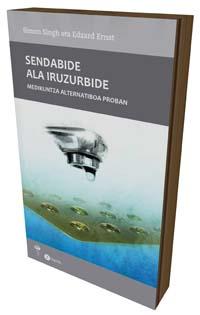Analysis of alternative medicine

In the Anglo-Saxon villages, on Halloween night children go home asking for candy. To present, they use the phrase "Trick or treat", that is, they will do a malice -- trick -- if the locals don't get the treat -- treat. The title of this book is a word game with this phrase " Trick or treatment ". In the field of alternative or complementary medicine, it is analyzed whether it is a fraudulent route or a healing route (treatment).
The first chapter explains what a clinical trial is, how good research is done, and how results should be interpreted. For the reader, it is a guide to assess medical research, clear criteria.
Basically four therapies are studied with great force in alternative medicine: acupuncture, homeopathy, chiropractic and medicine of medicinal plants.
These therapies consist of a chapter with the same structure. First, the origin of the therapy and its usefulness are counted. And then, what research has been done on this therapy, how they are and what value they have.
In almost all cases, it is concluded that these therapies are ineffective to treat what needs to be treated, that is, they do not provide greater benefits than the placebo effect.
The authors make a very cold and systematic study in each case, going down to great details. In general, they are not positioned in favor or against; the evidence of the data presented is ultimately the one that transfers the opinion of readers to one side or another.
However, there is one exception: in chiropractic therapy. There are few cases where therapy has caused deaths. In chiropractic, very violent movements are sometimes used, with few deaths after applying the technique on the neck. In very few cases there have been deaths, but according to the authors, with this therapy you are endangering without benefit in return.
One of the authors, Edzard Ernst, is chiropractic. And participation in this book is the fruit of an internal reflection. There came a time when he wondered if the professional activity being developed had a real scientific basis.
The other author, Simon Singh, is a writer specializing in scientific topics. He wrote a column about chiropractic for The Guardian newspaper, saying they were scammers. Kiropraxia was sued by the British Society. A great controversy arose. A popular movement against chiropractic was created and, in the long run, the chiropractic association annulled the complaint.
Precisely the starting point of this book was the Guardian column.





